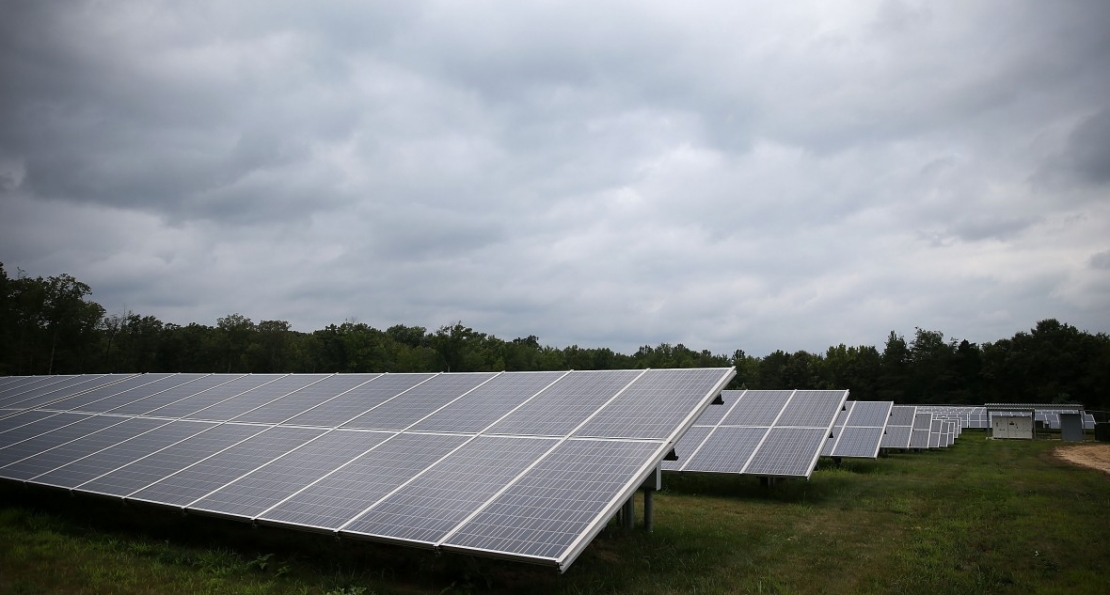Agrowing number of US cities and states have proposed or even passed legislation that would require producing all electricity from renewable energy sources like solar and wind within a few decades.
That might sound like a great idea. But a growing body of evidence shows it’s not.
It increasingly appears that insisting on 100 percent renewable sources—and disdaining others that don’t produce greenhouse gases, such as nuclear power and fossil-fuel plants with carbon-capture technology—is wastefully expensive and needlessly difficult.
In the latest piece of evidence, a study published in Energy & Environmental Science determined that solar and wind energy alone could reliably meet about 80 percent of recent US annual electricity demand, but massive investments in energy storage and transmission would be needed to avoid major blackouts. Pushing to meet 100 percent of demand with these resources would require building a huge number of additional wind and solar farms—or expanding electricity storage to an extent that would be prohibitively expensive at current prices. Or some of both
The basic problem is that the sun doesn’t always shine and the wind doesn’t always blow. The study analyzed 36 years’ worth of hourly weather data and found there are gaps in renewable-energy production even on a continental scale.
Relying on these intermittent sources alone would requiring building many more solar and wind farms to produce excess energy during particularly sunny and windy periods, plus huge storage systems that can bank hours’ or even weeks’ worth of power (see “Serial Battery Entrepreneur’s New Venture Tackles Clean Energy’s Biggest Problem”). Another possibility is to build long-distance transmission routes that could ship the electricity around the country at just the moment it’s needed.
Storage systems are incredibly expensive in the case of batteries—and geographically limited in the case of pumped hydroelectric, which requires a set of water reservoirs at varying heights (see “Why Bad Things Happen to Clean-Energy Startups”). Long-distance transmission lines are also pricey and can take decades to get approved and built (see “How to Get Wyoming Wind to California, and Cut 80% of US Carbon Emissions”).
Just getting to 80 percent of demand reliably with only wind and solar would require either a US-wide high-speed transmission system or 12 hours of electricity storage. A storage system of that size across the US would cost more than $2.5 trillion for a battery system.
By signing up you agree to receive email newsletters and notifications from MIT Technology Review. You can change your preferences at any time. View our Privacy Policy for more detail.
To meet all the nation’s annual electricity needs with 99.97 percent reliability, utilities would have to build 12 hours of storage plus at least twice the amount of renewable-energy generation, the study found. Or businesses could deploy slightly more wind and solar coupled with more than a month’s worth of storage.
The advantage over renewables of other clean options, like nuclear or natural gas with carbon capture, is that they can provide always-on power or, at least in the latter case, can quickly ramp up and down to meet fluctuating demand (see “Potential Carbon Capture Game Changer Nears Completion”).
“Policy makers would be well advised to consider the data and trade-offs that result from this type of data analysis before adopting policies or mandates for a 100% wind/solar grid,” said Nathan Lewis, a chemist at the California Institute of Technology and coauthor of the study, in an e-mail.
Still, the fierce debate among scientists over the virtues of aiming for 100 percent renewables rages on. Most prominently, Mark Jacobson of Stanford has argued that states and nations can make that transition affordably. Other researchers have critiqued his work, notably in a paper published earlier this year in Proceedings of the National Academy of Sciences. Jacobson subsequently filed a libel lawsuit against the lead author and publisher, which he dropped last week (see “A Renewable-Energy Champion Is Suing His Scientific Critics”).




